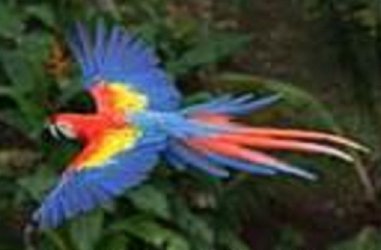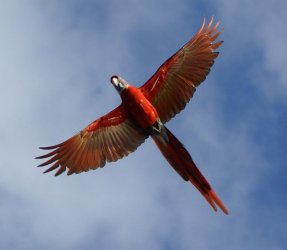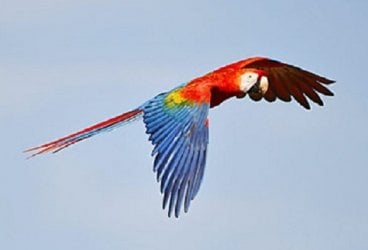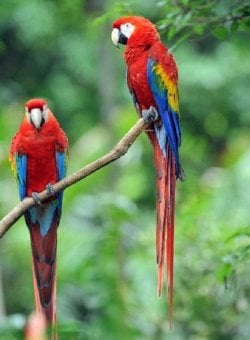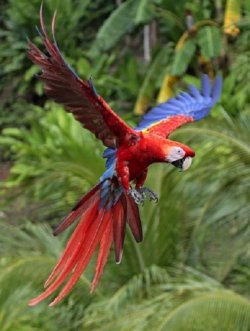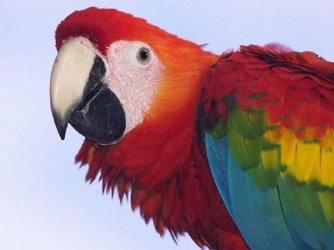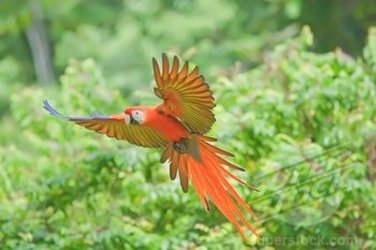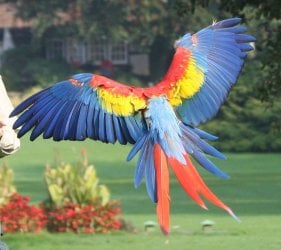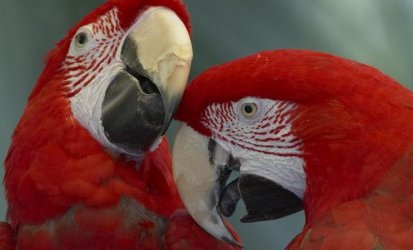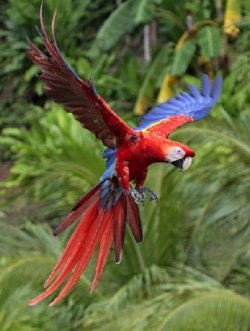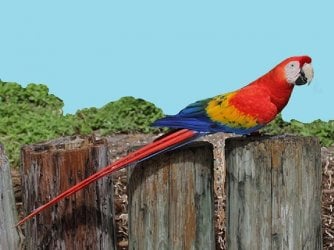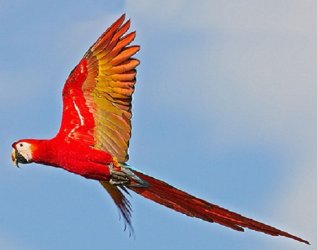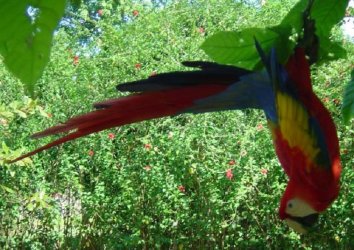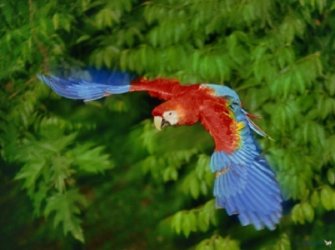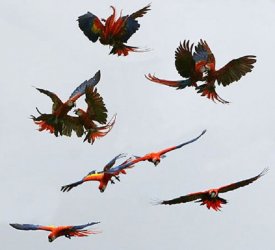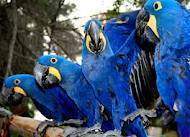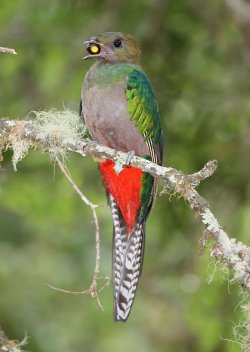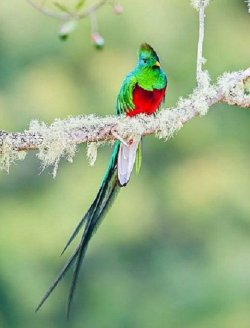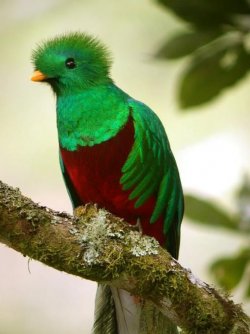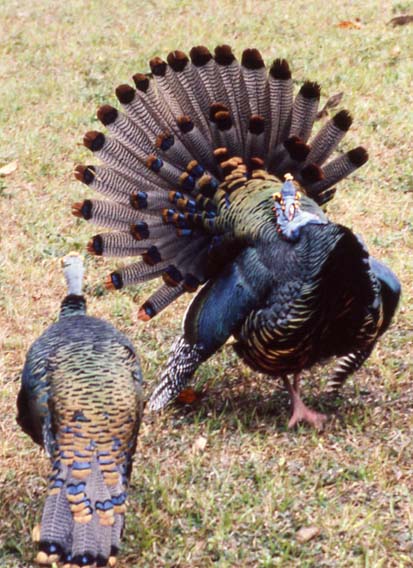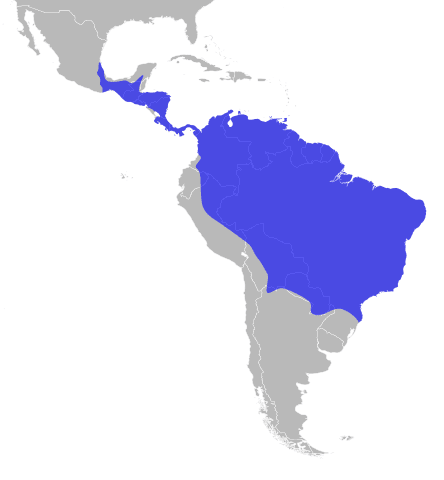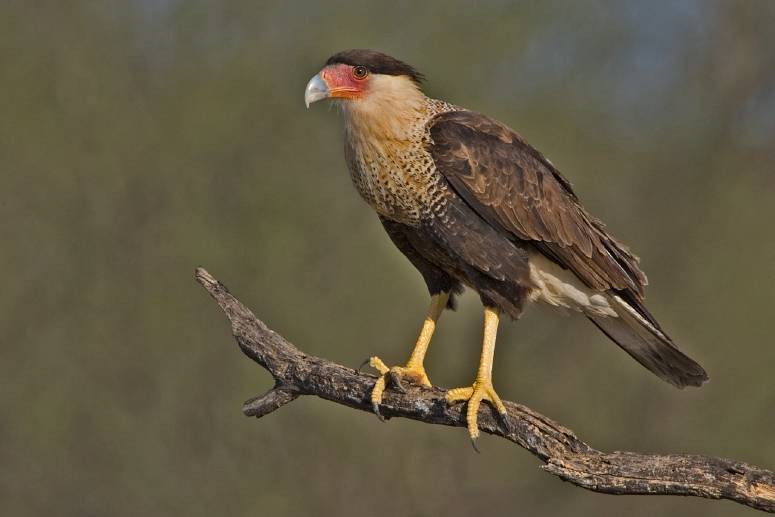This thread is to celebrate the lovely birds of the jungle, sea, river, forest, and Caribbean, from America's Mexican border to the southernmost tip of Latin America.
They're so beautiful. I've been collecting photos of Scarlet Macaws for a friend here at USMB, who needs them to research a work of art, and needed to place them somewhere at USMB.
Click on the thumbnail to see the feather details of these amazing birds.
My first closeup of a macaw was at a cousin's house. He hated people, she was mean. Not sure the connection, but all I remember is he was in a corner with a covered cage most of the time, and she died when he was about 5 years old. Not much of an aesthetic experience, but it was a reminder that birds are wild animals and do not domesticate well where their behavior gets human behavioral expectations which is, of course, highly confusing to them as intelligent as they are. They may be taught to speak, and will occasionally pick up a word unexpectedly, especially one repeated often and used to emphasize something.
Here's the product of this mornings gleanings from the web. Didn't count, but there may be somewhere in the neighborhood of 8 to 10 scans to show the coloration differences of the dorsal and ventral areas. You will see a red bird if it is flying overhead and you view the ventral side. If you are above or behind the scarlet macaw you will see a bird in the primary colors. Do I love scarlet macaws. First time up close was at Roatan Island at a bird sanctuary owned and operated by a woman from the states who came to visit the island, then fell in love with the avians of the isle.
Photo 1: Dorsal view example
Photo 2: Ventral
Photo 3: Dorsal and ventral wing areas in view
They're so beautiful. I've been collecting photos of Scarlet Macaws for a friend here at USMB, who needs them to research a work of art, and needed to place them somewhere at USMB.
Click on the thumbnail to see the feather details of these amazing birds.
My first closeup of a macaw was at a cousin's house. He hated people, she was mean. Not sure the connection, but all I remember is he was in a corner with a covered cage most of the time, and she died when he was about 5 years old. Not much of an aesthetic experience, but it was a reminder that birds are wild animals and do not domesticate well where their behavior gets human behavioral expectations which is, of course, highly confusing to them as intelligent as they are. They may be taught to speak, and will occasionally pick up a word unexpectedly, especially one repeated often and used to emphasize something.

Here's the product of this mornings gleanings from the web. Didn't count, but there may be somewhere in the neighborhood of 8 to 10 scans to show the coloration differences of the dorsal and ventral areas. You will see a red bird if it is flying overhead and you view the ventral side. If you are above or behind the scarlet macaw you will see a bird in the primary colors. Do I love scarlet macaws. First time up close was at Roatan Island at a bird sanctuary owned and operated by a woman from the states who came to visit the island, then fell in love with the avians of the isle.
Photo 1: Dorsal view example
Photo 2: Ventral
Photo 3: Dorsal and ventral wing areas in view


